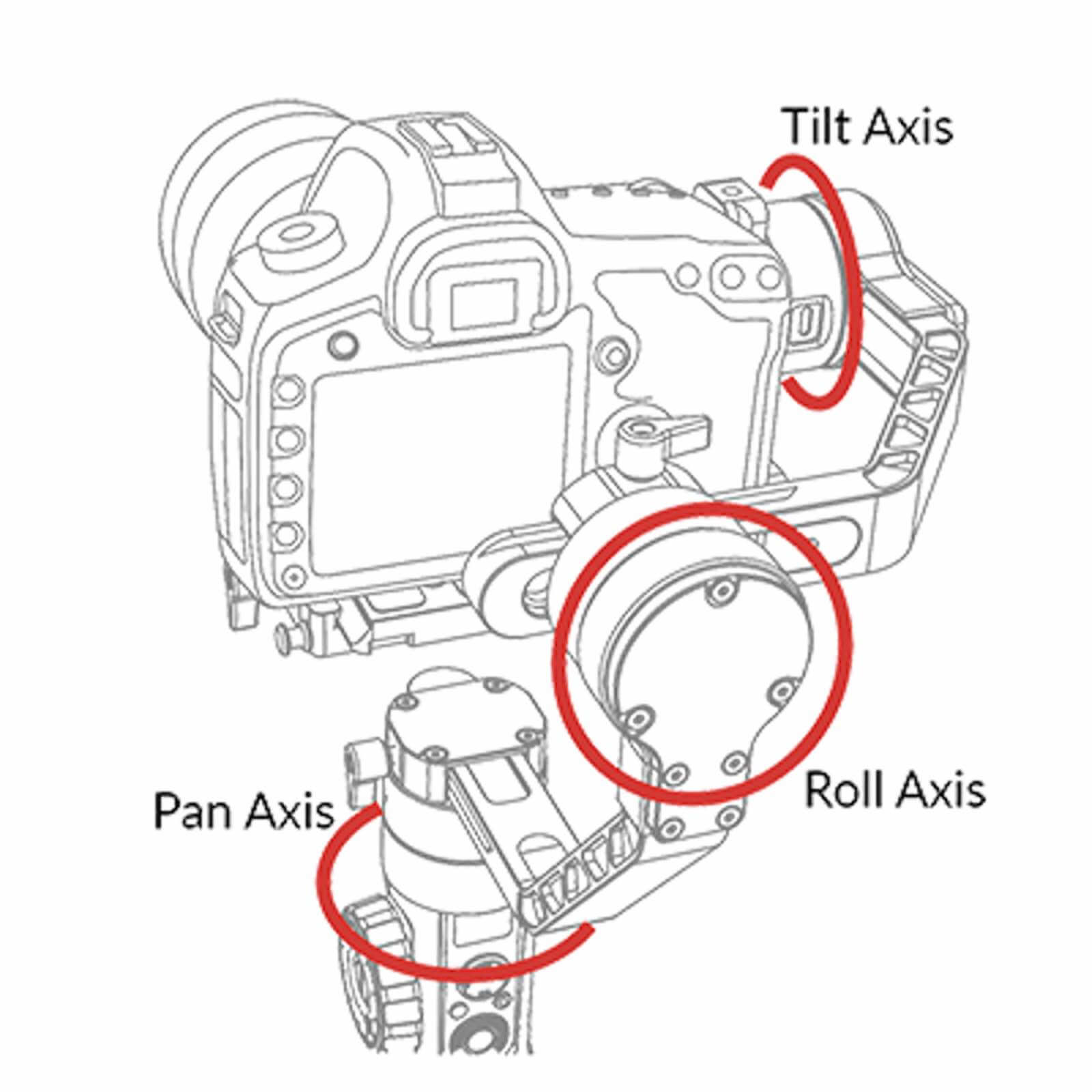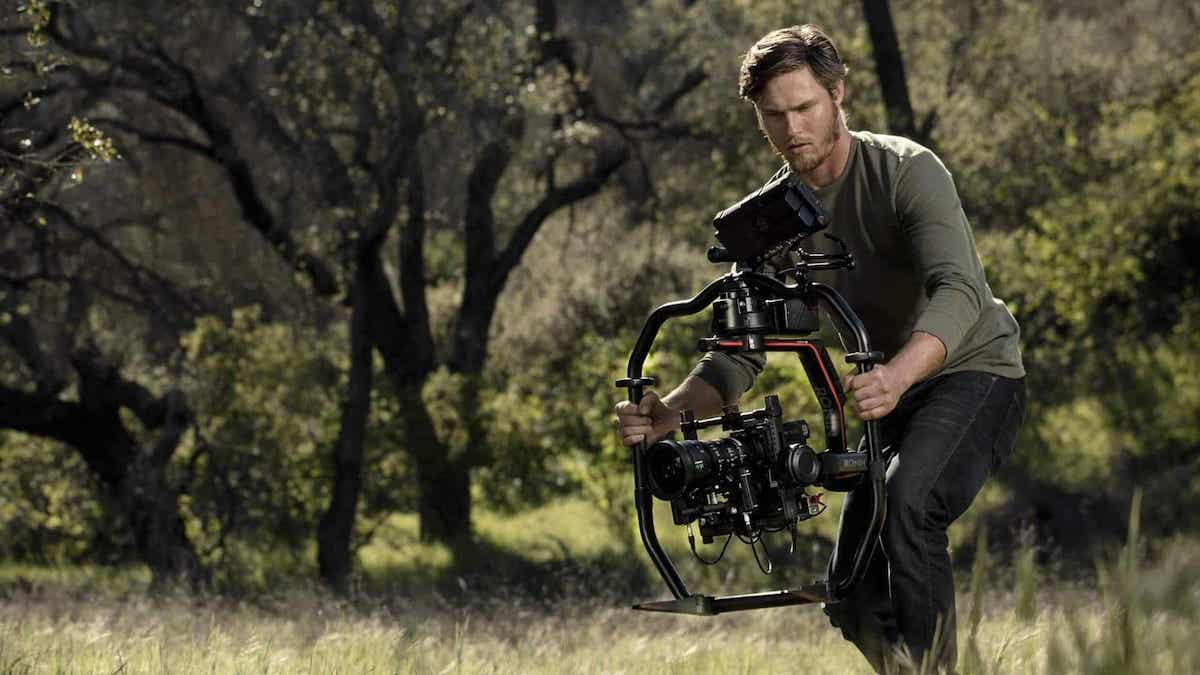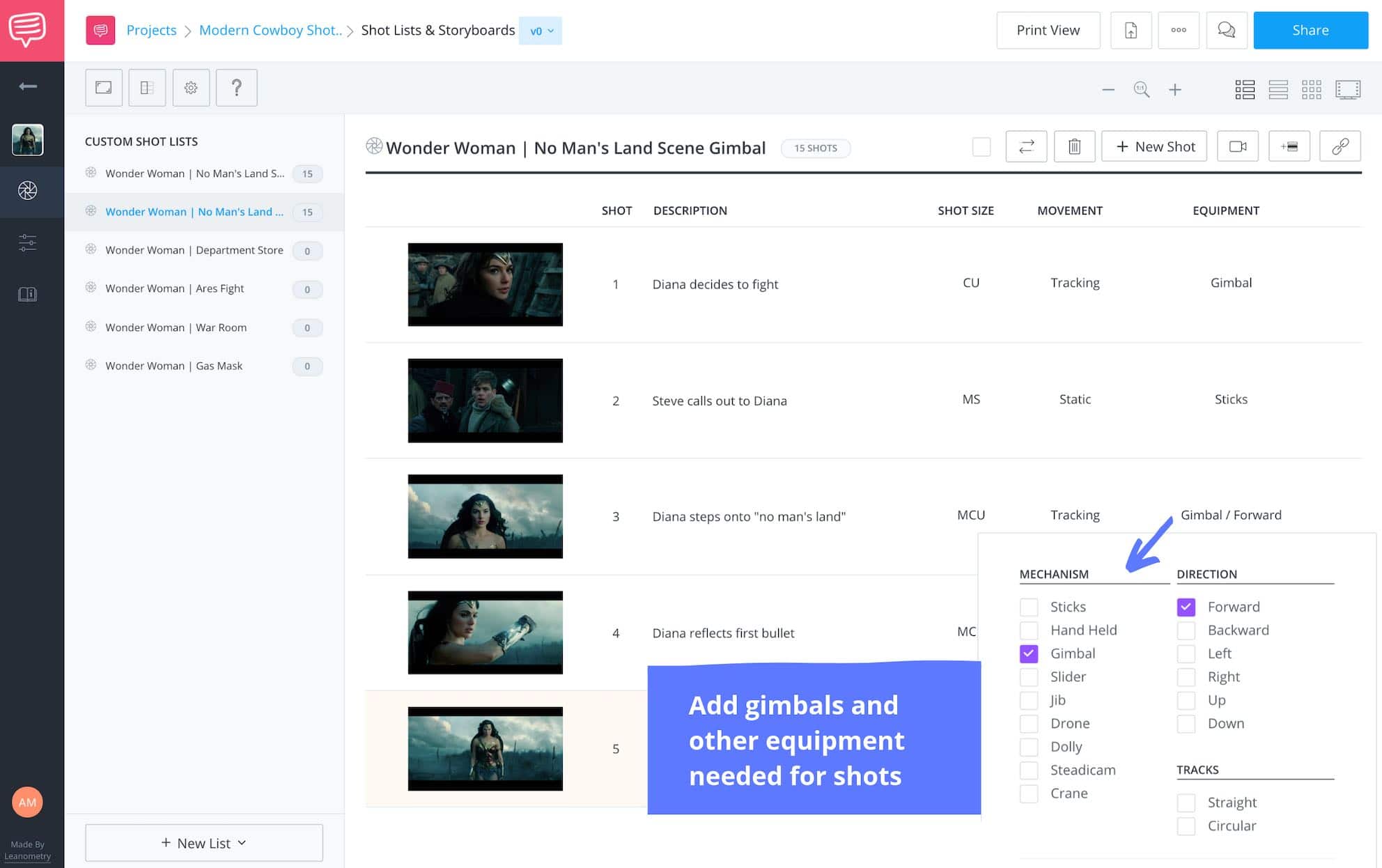If you’re an aspiring videographer, or even cinematographer, you’ve probably used a gimbal. But if you haven’t…how come? They’ll make your shooting life a whole lot easier. And they’re pretty fun to use. So, what is a gimbal? And how can you use them to make your shots just a bit better? Let’s find out.
Define Gimbal
How does a gimbal work?
When shooting moving subjects, stability and range of motion is critical to nailing the shot. That’s where a gimbal comes in.
Let's define it in terms of its mechanics and then we'll see how to use one to get great shots.
GIMBAL DEFINITION
What is a gimbal?
A gimbal is a pivoting support that allows you to rotate an object along a single axis. A common 3 axis gimbal allows a camera mounted on it to be independent of the movement of the one holding the gimbal. These 3 axes are identified as pitch, yaw, and roll.
The pitch axis (i.e., tilt) refers to the up and down movement of a subject. A good example of when to work with the tilt, is when you’re trying to capture objects falling down, or a subject coming down the stairs.
The yaw axis (i.e., pan) refers to left to right movement, and can be used to capture objects moving horizontally.
And the roll axis (i.e., dutch angle) allows for capturing objects with off-center or unleveled angles.
These 3 axis gimbals ensure that a camera’s motion is stabilized regardless of the movement, which is why they’re great for videographers.
GIMBALS VS. STABILIZERS
- They are a type of stabilizer.
- Handheld Stabilizers: Avoid the use of a vest or 3-axis gimbal. Less expensive, relies on a smooth operation.
- 3-Axis Gimbals: Incorporate a set of rotating gimbals. Electronic and rely on battery and charge time.
Here’s what the basic system of pitch, yaw, and roll looks like with a mounted camera. Using our common understanding of tilt, pan, and roll, you can see just how versatile they can be when adjusting shot angles.

Gimbal on a mounted camera
The good thing about them is that they’re fairly lightweight compared to major motion picture stabilizers. They’ll demand less of you and really help with basic camera shake. Read more on the best gimbal stabilizers.
We've answered the question: "What is a gimbal?" But that's just the beginning. In the next section, we'll go over some basic operating strategies that will make this your new favorite piece of equipment.
Extra TIPS
Operating a gimbal
Now that we've defined what a gimbal is, here are some quick tips on getting the most out of them. Using one provides a lot versatility in the quality and types of shots possible. When you know the advantages, you'll be ready to maximize this particular piece of equipment.
SET THE BALANCE
Make sure to balance your gimbal, otherwise you’ll be dealing with unnecessary shake. Watch the how-to video below.
How to balance your gimbal
Balancing is a necessary step. But once you've done that, you'll be able to capture smooth and dynamic shots with ease. Now, that you're ready to shoot, here are a couple strategies to keep in mind to create the most slick and professional looking shots on the cheap.
SHOOTING TIPS
The video below talks about how to create quality gimbal shots. For such a simple piece of equipment, watch how simple tricks like using the foreground can make your images pop.
Learn a few more techniques
PLACE SUBJECTS IN FOREGROUND
Here’s a quick tip. In your shot list, make sure your shots have something interesting in the foreground of the shot. It will really emphasize the camera’s movement. If you move it around empty space, you’ll miss the opportunity to use the gimbal’s potential.
Now, if you’re moving it around a subject standing still, the viewer is more interested in what you’re showing them, because they see them in relation to the background. It’s easier to see the sleek movement gimbals create when there’s something to look at.
GET CLOSE
Also, when using one, don’t be scared to get up close and personal. That’s the uniqueness of this equipment — you can capture tight moving shots. Get low to the ground and follow a person walking down the street. Try out different angles.
Now that you know what kinds of shots you can get using a gimbal, you can start shot listing.
GIMBAL VIDEO PLANNING
Plan your shots
You don’t have time to waste so always plan out your shots. Shot lists are your shooting blueprints. And with modern software, it really doesn’t take too much of your time.
Even though the gimbal is simple enough mechanism, make sure you schedule your shots accordingly. One tip is to shoot all your gimbal shots together to avoid wasting time mounting and un-mounting the camera between shots.
In our shot list below, we've thrown in a scene from Wonder Woman, to show how easy it easy to plan your shots in StudioBinder.
In this post, we provided a definition, illustrated the basics of how this equipment works, and even included a couple tips for how to maximize their benefits.
Now it's up to you to get out there and shoot some dynamic and clean gimbal shots. They will add a level of professionalism to your project without breaking the bank.
Related Posts
Up Next
Best gimbals and stabilizers
Now that you have more of an understanding of what a gimbal is, it’s time to pick which one is best for you. The next post lists a ton of camera stabilizers and gimbals to help you choose the best one for your project.
Up Next: Best video camera stabilizers →
Showcase your vision with elegant shot lists and storyboards.
Create robust and customizable shot lists. Upload images to make storyboards and slideshows.


The way you describe what is gimbal stabilizer is way better cause you describe it thoroughly. Thanks for sharing such a informative article.
Just for the newbies- the 360 shot is only available on the ronin s. The zhiyun has a 45-degree tilt, and other gimbals don’t have this feature,
Also, for some of the shots you would need a monitor as it seems nearly impossible to get these shots in one go.
Happy filming everyone!!
-Steve Brodsky
The article is very informative and knowledgeable, before reading your article I was very much confused about the gimbal but after reading your article I have no confusion about the helmet. I really appreciate your work on the article.
Balancing takes practice sure, but eventually, you get a feel for where the camera and gimbal arms should be without even thinking. On my Moza Air 2, there are measurements on each arm and also the camera plate so you can make notes on where to set everything if you always use the same setup.
The article is very informative and knowledgeable, before reading your article I was very much confused about the gimbal but after reading your article I am surely gonna order it